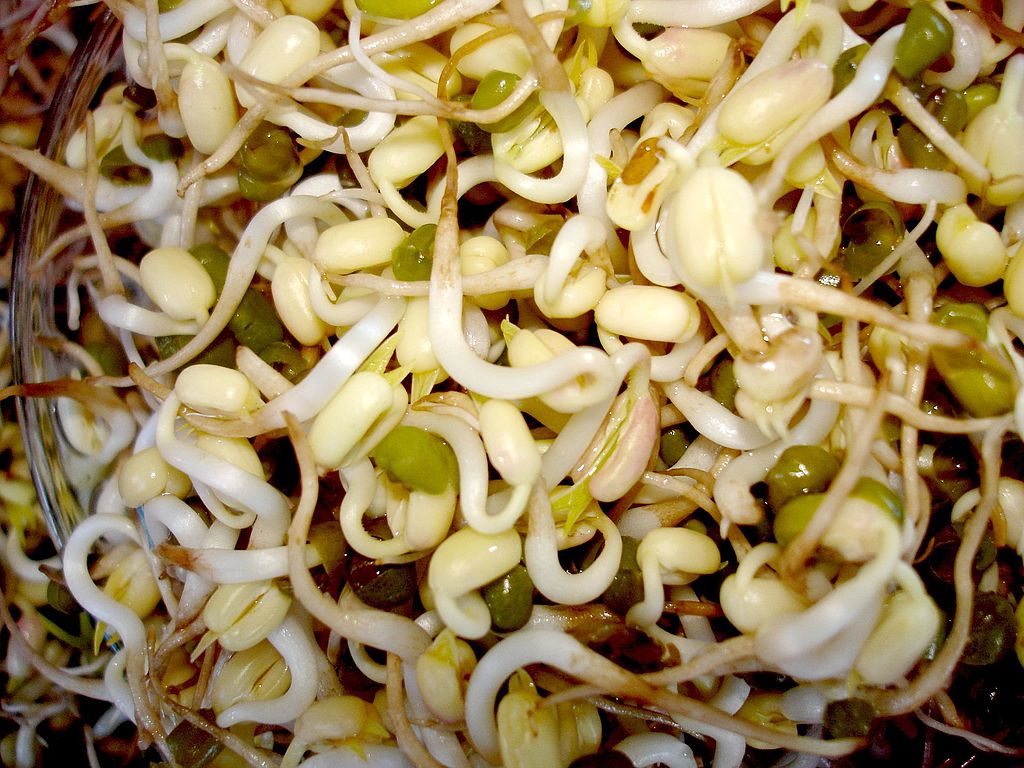If you love Asian food, especially Chinese, Vietnamese, Korean, and Japanese, you most likely have enjoyed mung bean sprouts. These bean sprouts are especially common in many dishes served in the aforementioned cuisines and are becoming more popular around the world as well.
If you currently purchase bean sprouts at the store, you probably know that they can be expensive and they do not last for a long time since they have been sitting on the shelf for a while. They are also most tasty when eaten fresh. The solution? Sprout your own mung bean sprouts at home.
Bean Sprout Cultivation at Home
Growing mung bean sprouts at home is surprisingly easy and only takes a few days. It also is much cheaper and tastier than buying them in the store. In fact, if you plan it well, bean sprout cultivation at home will ensure that you always have a steady supply on hand.
Equipment Needed to Grow Bean Sprouts
- Sprouting jars.
- Sprouting lids with mesh.
- Or a sprouting kit that contains everything you need to start sprouting.
- Mung bean sprouting seeds with good germination rates.
- Water.
And that is it! You are ready to sprout your own mung bean sprouts.
Where to Buy Your Sprouting Seeds and Equipment
We love buying our organic mung beans and other sprouting seeds from True Leaf Market. You can buy yours here: Mung Bean Sprouting Seeds
You can also buy your mung bean sprouter equipment from True Leaf Market here: Sprouting Equipment
We especially love this sprouting kit: Sprouter Kit
They offer reliable products that are reasonably priced and have great customer service.
How to Sprout Mung Bean Sprouts

Soaking
- Make sure your sprouting jars and sprouting lids are washed, dry, and clean.
- Gently wash 2 - 3 tablespoons of mung beans in room temperature water.
- Drain the mung beans, place them in your sprouting jar, and fill the jar with enough cool water to cover the beans by about an inch.
- Cover the jar with the sprouting lid.
- Soak the mung beans for 12 - 24 hours at room temperature.
Sprouting
- After soaking, drain the mung beans through the sprouting mesh lid.
- Ensure that all the excess water drains off. The beans will still remain wet.
- Place the jar with the mung beans upside down and at an angle, on a tray in a cool and dark place. This allows any excess moisture to drain. A dark closet or cupboard works well. Another option is to cover the jars with a dark colored, but lightweight, cloth. Make sure that air can circulate around the mouth of the jar.
- Rinse the beans twice a day with cool water and drain thoroughly, repeating step 8 each time.
- Continue to rinse twice daily until the beans have fully sprouted. Maintaining them in the dark during this process prevents the sprouts from turning green, which can cause them to become bitter.
Harvesting
- Depending on the germination rate of your beans and the room temperature, this process can take 3 to 5 days. Mung bean sprouts are ready to be harvested once they reach about an inch in length. If you let the sprouts grow for too long, they can start to develop small roots. You should harvest the sprouts before this happens.
- Give the sprouts a final rinse with cool water and remove them from the jar.
- To separate the sprouts from the hulls, place the entire contents of the jar in a large bowl. Add enough water for the sprouts to float. Agitating or stirring them will allow the sprouts to separate from the hulls. Discard the hulls and transfer the sprouts to a towel lined tray.
Storing
- Allow the sprouts to dry thoroughly at room temperature before transferring them to a clean storage container that is lined with a paper towel. Store the sealed container in the refrigerator.
- Check the paper towel periodically and replace it with a new one as needed to keep your sprouts dry.
- Mung bean sprouts will remain fresh in the refrigerator for up to 7 days.
As an Amazon associate, I may earn commissions from qualifying purchases.

